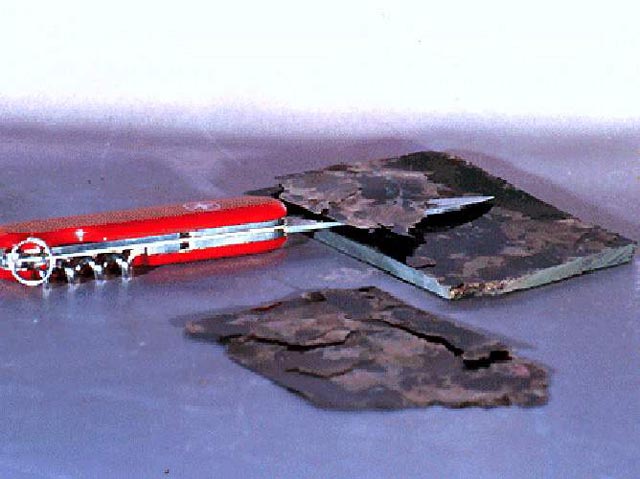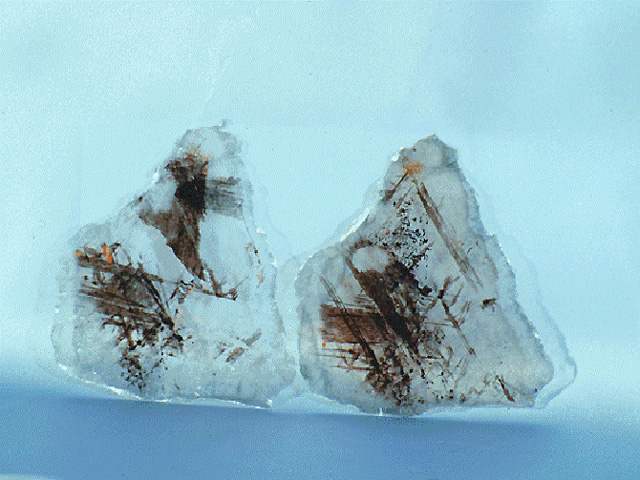
Major Mineral Groups (Part 4)
Silicates (continued: the micas)
Biotite mica Pronounce:
• Biotite, a complex silicate, has a composition of K(Mg,Fe)3(AlSi3)O10(OH)2.
• Biotite is identified by its non-metallic, shiny luster; dark brown or black color; one perfect cleavage; and thin, elastic sheets.
• Biotite is a soft mineral. Its hardness is 2.5 to 3.
• Its specific gravity is 2.7 to 3.1.
• Biotite is used in fire-resistant til es, rubber, and paint.
es, rubber, and paint.
Biotite is a type of mica. Micas form in thin sheets that can easily be split apart. Biotite occurs as shiny black flakes in igneous and metamorphic rocks. (Photograph by Parvinder Sethi)
Click to play video.
• Muscovite, a complex silicate, has a composition of KAl2(AlSi3)O10(OH)2.
• Muscovite is identified by its non-metallic, shiny luster; clear to translucent look; one perfect cleavage; and thin, elastic sheets.
• Muscovite is a soft mineral. Its hardness is 2 to 2.5.
• Its specific gravity is 2.7 to 3.0.
• Muscovite is used in computer chip manufacturing, electrical insulation, roof shingles, facial makeup, and paint.

Muscovite is another type of mica. Micas form in thin sheets that can easily be split apart. Muscovite occurs as shiny colorless flakes in igneous and metamorphic rocks. (Photograph by Parvinder Sethi)